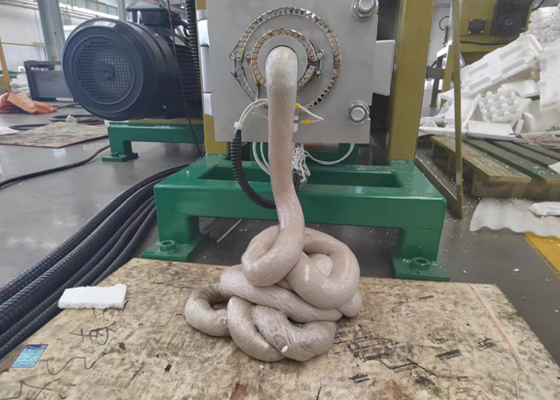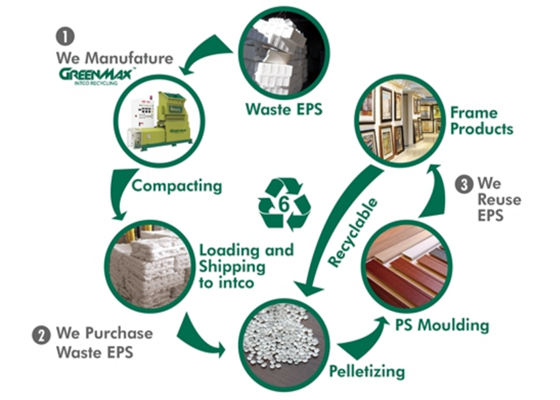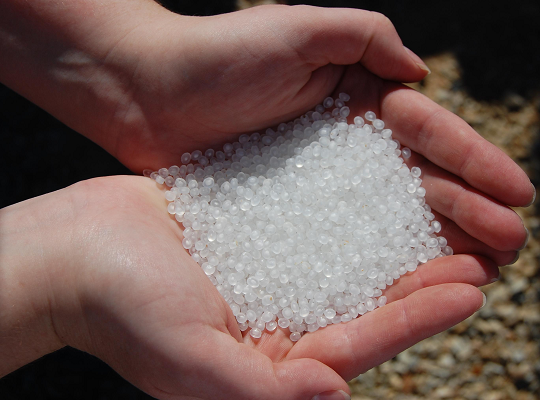Promoting plastic recycling - PS and ABS
To move from a linear to a round economy for plastics, all plastics must be part of the cycle. However, in terms of recyclability, there are major differences among the different kinds of plastics. In this blog, you can read about the recycling of polystyrene (PS) and acrylonitrile butadiene styrene (ABS) and what makes these two types of plastic different.
What is Polystyrene (PS)?
Polystyrene, or PS for short, is the common plastics and also is used - either as a thermoplastic product or as foam (EPS) - in several areas of daily life.
In its solid state, polystyrene is clear, hard, impact-sensitive, and electrically insulating. Nevertheless, it can be tinted and printed without any troubles. Its physical harmlessness has made the plastic attractive to the food market as visible packaging. Various other common applications include disposable drinking cups, lids with spouts for coffee cups or disposable cutlery while yogurt mugs or packaging for honey or coffee cream are likewise created from polystyrene. Polystyrene is also used in industry, for instance for element covers, coil formers.
As expanded polystyrene or EPS, also called Styrofoam, polystyrene is used for the manufacturing of take-away packaging or trays as well as containers for fish, meat, vegetables, and fruit. Polystyrene is very cost-effective compared to other plastics. It has high anti-penetration in the structure to gases, water vapor and also is odorless and tasteless, which makes it optimal for food storage.
What is Acrylonitrile Butadiene Styrene (ABS)?
Acrylonitrile butadiene styrene (ABS) is one of the most crucial engineering thermoplastics. It is a polymer containing 3 monomers - acrylonitrile, butadiene and also styrene, whose shape can be transformed as preferred at certain temperature, and which is moisture- and also dirt-repellent and also immune to grease and oil, electrostatic charge. ABS is stiff, impact and scratch resistant as well as can be easily bonded, welded, and machined. This plastic is also well matched for coating with polymers or steels. The major applications for ABS plastics are 40% for house appliances, 26% for electric and electronic (E&E) applications. ABS has been used in the toy industry for decades. In the auto industry, ABS is used, for example, for body parts, trim, spoilers, headlamp lights in addition to various interior parts. Last but not least, 3D printing innovation has made ABS known globally, as the material is among the most widely used materials in the 3D printing process.
Recycling potential for PS and ABS
PS Recycling
Polystyrene is ideal for recycling because its properties do not change significantly even after multiple processing.
PS recycling methods have been put into practical use, among which the machinery recycling is currently the main method adopted and proven. Machinery recycling can be divided into simple regeneration and compound regeneration.

Simple regeneration is mainly used for corner waste in production plants, but also includes disposable waste that is easy to clean and recycle. Its ingredients are relatively simple and clean, and the recycled materials can be used alone or in a certain proportion of the new materials.
Compound regeneration is mainly used for collection through different channels after the circulation and consumption of commodities. It is characterized by many impurities, serious dirt, and difficulty in recovery. Compound regeneration requires high recovery technology and high-efficiency equipment, including collection, volume reduction, and crushing, cleaning, and separation, selection, granulation, etc.
For PS recycling, the large volume with lightweight has always been a concern. As we know, Some PS contains over 98% air, and the volume must be reduced before recycling for saving storage and transportation fees. GREENMAX EPS Melting Machine is a polystyrene recycling machine with the volume reduction ratio of 90:1, it can crush, compact, and melt the waste foam and then turn it into dense ingots. The compressed EPS ingots can be used as raw material for many new foam products.

INTCO Recycling purchases compressed and densified PS foam waste from around the world and transports it to a recycling plant in Malaysia for high-quality recycled granulation. The PS pellets are reprocessed into frame strips and then assembled into photo frames, picture frames, mirror frames, and other products, which are sold again all over the world for home decoration.
The main feature of PS Reusing lies in the recycling of renewable PS plastics, which can be processed into various exquisite wall decoration products with INTCO Recycling’s expertise. This process of replacing wood with plastic and turning waste into treasure has broken the traditional production of wooden frames, changed the original complicated production process, as well as improved production efficiency while reducing costs, saving a lot of forest resources, and protecting nature.
ABS Recycling
ABS is basically very easy to recycle mechanically. The benefit of this plastic is that, as is the case with PS, as a recyclate it keeps the exact same properties as before the reusing process. However, recyclers frequently face a major difficulty. When it comes to home devices or electric scrap, after the metal portions have been divided in the sorting plants, what remains is a plastic blend that not just includes a wide variety of plastic types, but is also infected by dust, timber, glass, and also various other contaminations. The task is then to pick clean and recyclable plastic from this complicated mixture. Color also plays a important role in the recycling process. Electronic scrap, for example, has a particularly high proportion of black plastics, which in turn are not detected by the near-infrared technology used in sorting plants.

Therefore, a large proportion of valuable ABS ends up as waste because of the black coloring. A remedy is provided by so-called electrostatic separation technology, which can also separate black material mixtures as well as also achieve purities of up to 99% for ABS. However, this is only possible if the electronic scrap is pre-concentrated, figuring out plastics which contain flame retardants, for instance. This pre-concentration of plastics from complicated material mixtures needs a mix of dry and wet processing techniques.
